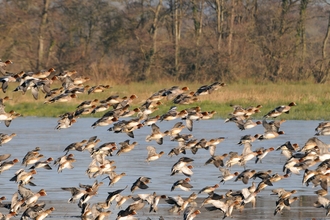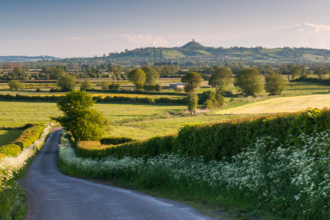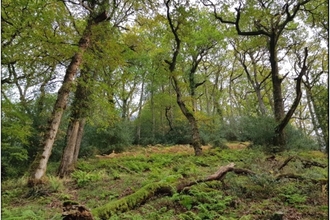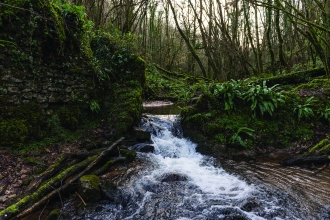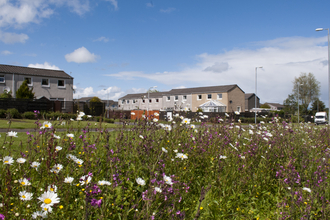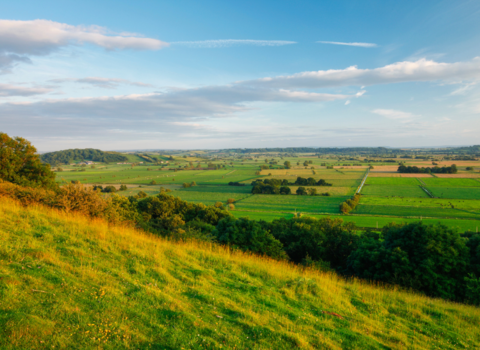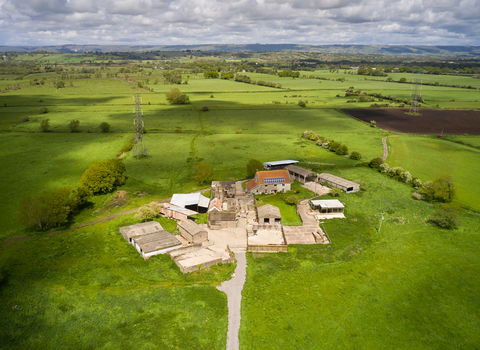Making space for nature
Currently only 10% of the county can be classified as being in good natural or semi-natural condition with species-rich natural habitats supporting abundant and diverse wildlife, enabling it to move, reproduce and thrive.
For nature to recover, we need to triple the amount of land managed for nature and at the heart of this ambition is the need to create a strong, interconnected network of wild spaces; connecting natural spaces, restoring the resilience of our ecosystems at a landscape scale, and providing us with healthy soils, clean air and water.
Working with our peers, partners, communities, farmers and landowners we will develop positive ‘restoration pathways’ and identify key actions that can be used to improve habitat connectivity and create space for nature. Land of any size can contribute to the Nature Recovery Network – nature reserves, community spaces, gardens, farms, parks, churchyards and schools – it works at any scale.
Nature Recovery Networks - joined-up, nature-rich spaces of all sizes, across all areas are the key. These networks can help to ensure nature's recovery across at least 30% of our land and sea by 2030.
Everything works better when it’s connected.
Read more
Wildlife and natural systems joined up
A wildlife-rich world is vital for our wellbeing and survival. Yet many of our current systems and laws have failed nature. Wildlife and wild places are battered, broken, and even in some cases disappearing. But we know that the more space nature has, and the more those spaces are connected together, the better the chances of survival.
National networks designed to support recovery can help. We use the term “Nature Recovery Network” below for simplicity, though developing policy in Wales and Northern Ireland means the terminology outside of England to describe this concept can differ slightly. A Nature Recovery Network should extend across the whole country, agricultural and urban land, in gardens, road verges, nature reserves, rivers and more.
A network like this will allow plants, animals, seeds, nutrients and water to move from place to place enabling the natural world to adapt to change, providing plants and animals with places to live, feed and breed. To be effective, like our road network, it must be treated as a joined-up whole.
How will the Nature Recovery Network work?
A Nature Recovery Network should be part of the way a country plans its use of space, so that nature’s recovery is prioritised.
There are 2 steps:
- Local mapping should identify where healthy wildlife habitat is already, where it should be in the future and how it will be established, protected restored, and joined together to achieve recovery.
- The maps should then be used to plan where to take action for nature, to inform local planning decisions and to target investment of agricultural funding, and biodiversity “net gain” contributions from housebuilders. The map-based approach is also key to deciding where best to deliver nature-based solutions, for supporting climate change mitigation and adaption and for helping tackle health inequalities.
What are The Wildlife Trusts doing to support the Nature Recovery Network?
Over the years, Wildlife Trusts have taken a ‘Living Landscapes’ approach to creating more space for nature – we have cared for and improved wild places, restored and created new habitats, helped to make farmland more wildlife-friendly and brought nature into the places people live. However, that approach needs to be applied everywhere. We will do everything we can to support wildlife, but everyone needs to help deliver the Nature Recovery Network.
In England, our useful handbook can support anyone working towards establishing a recovery network. It contains a description of the Nature Recovery Network and its components, information on Local Nature Recovery Strategies, detailed guidance on how to map the network and how it can be used in a range of policy delivery. It is hoped that the handbook can be used to provide a consistent approach to be taken across England.
Would the Nature Recovery Network be a new designation in the planning system?
No - mapping work would identify important wildlife places to protect and opportunities to create and restore habitat as part of a recovery network.
But there is a gap in the suite of environmental protections in England. We believe a new designation is needed to protect land where nature is recovering. At the moment, only places that are already very rich in nature are protected in law, there is no way to protect the places which have potential to be richer in wildlife or where people are creating or restoring habitat and actively managing these places so that nature can flourish. We are proposing a new designation which we have called ‘Wildbelt’ to counter to this. Read more about Wildbelt.
Is there already Government support for a recovery network?
The Westminster Government’s 25 Year Environment Plan (2018), and its Environment Bill, both promote and support the development of a Nature Recovery Network for England, and there will be a legal requirement to create Local Nature Recovery Strategies. To successfully create a Nature Recovery Network that helps to tackle the nature and climate emergencies, these local strategies must be really ambitious and encourage everyone to take part in their delivery.
What are Local Nature Recovery Strategies?
The Westminster Environment Bill includes a requirement for Local Nature Recovery Strategies to be produced that cover the whole of England. They are to be prepared and published by a ‘Responsible Authority’ – most often a local authority – working in partnership with local stakeholders and consulting local people. Each Strategy will include a map of existing areas important for nature and identify the opportunity areas for nature and should be accompanied by a delivery plan.


